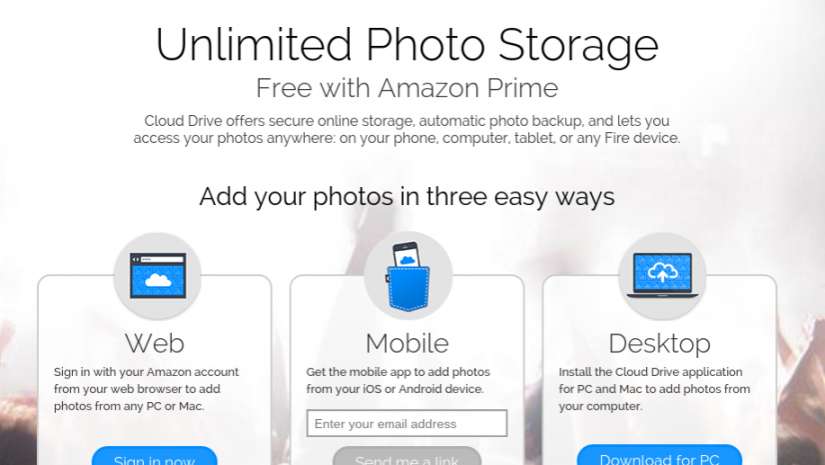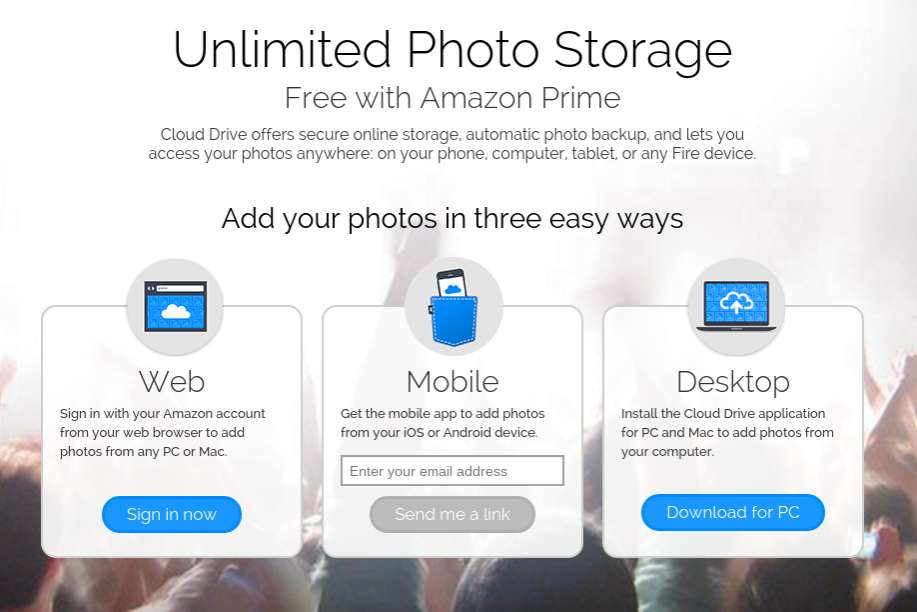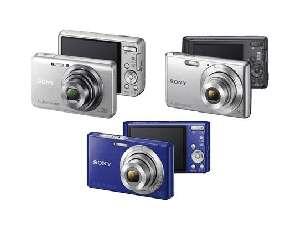Amazon has offered yet another improvement to Prime Photo, part of their Amazon Cloud Drive storage interface, in its continued effort to grab a larger share of the cloud photo storage market. Now in addition to storing unlimited photo files, Prime users can share Prime Photo with one other person in their household. The move positions Amazon to better compete with other popular cloud storage options for photographers, such as Google Photos and Dropbox.
Inside Prime Photo
Amazon launched Prime Photo in late 2014 as an extension of Amazon Cloud Drive, announced in 2011. Right out of the gate, Prime Photo had a few things going for it that its competitors didn’t. Not only does it allow for unlimited photo storage (video excluded), it treats RAW files* the same as JPEGs or PNGs. Better yet, as of earlier this year, Amazon let people without Prime memberships ($99 per year), purchase Prime Photo for just $12 per year, which is far less than other popular options, as discussed below.
Admittedly, the service is much younger than Dropbox and Google Drive, which shows in its interface and functionality. Using it is a little choppy, and its upload time requires some patience. Amazon provides a downloadable app for Prime Photos, though, which functions much more smoothly.
Still, its storage capacity makes it an undeniable powerhouse in cloud photo storage. A closer look at the competition, however, reveals more about its strengths and weak points.
Amazon only recognizes RAW files from Nikon, Canon and Sony cameras, although other file types can be converted to Adobe Digital Negatives before uploading to Prime Photo.
Dropbox and Carousel
Most are already familiar with Dropbox as a long-established cloud storage provider, but Carousel, released in April 2014, put a friendly interface on the service for organizing photos stored on the site.
Dropbox gives free users 2GB of space for all file types. For $100 a year, Dropbox provides 1 Terabyte of storage, which would satisfy most photographers’ storage needs. But keep in mind that an Amazon Prime membership is also about $100, which provides unlimited photo storage, along with all the perks of a Prime membership. The only mitigating factor is Dropbox’s far superior interface and functionality, the value of which really depends on personal preference.
Dropbox is also unique in its ability to merge with your file system on Windows, Macs and ChromeOS computers, so if you don’t prefer the Carousel organization, you can organize the files just as you would any others on your computer.
Google Photos and Google Drive
Amateur photographers may find their needs best served here, as Google Photos offers unlimited non-RAW photo storage. Plus, its interface and uploading speed is without match, although those should be lesser considerations compared to price and storage capacity.
You can store RAW photos on Google Photos as well, but they will take away from your allowed Google Drive storage space. On Google Drive, you get your first 15 GB free. Additional storage after that is priced equal to Dropbox ($100 per year for 1TB).
Finally, any time you mention a Google product, you have to mention the ease-of-use and intuitive design that the company is known for, and Google Photos is no exception. In addition to quick uploads, smart organization and a great-looking design, Google also added the “Assistant” feature to the program. Mostly, the assistant feature serves to take your photos and make them into animations, videos and collages, but it’s still another testament to Google’s eye for user-friendly features.

Flickr Photo Storage
Flickr offers all users 1TB of storage space for free. Pro users, although they get some added functionality for $50 per year, are limited to the same amount. Even so, with only JPEGs and PNGs being uploaded, it’s doubtful you’ll ever hit that ceiling.
You can upload a RAW file to Flickr, but it will convert the file to a JPEG so it can be viewed by others (Flickr is a photo-sharing site after all). Because of this, Flickr isn’t the optimal place for a massive archive of your untouched photos, even with its huge storage capacity.
Final Thoughts
While its functionality leaves one wanting, it’s hard to argue against the storage capacity Amazon offers through Prime Photos. For about $100, competitors offer 1TB of storage space–a limit most photographers won’t reach–while gives you unlimited storage space for nearly a tenth of the price, $12 a year.
Amazon still has some work to do to make Prime Photo more user-friendly and less error-prone, but with its raw specifications, Amazon might soon become the standard-bearer for cloud photo storage.






